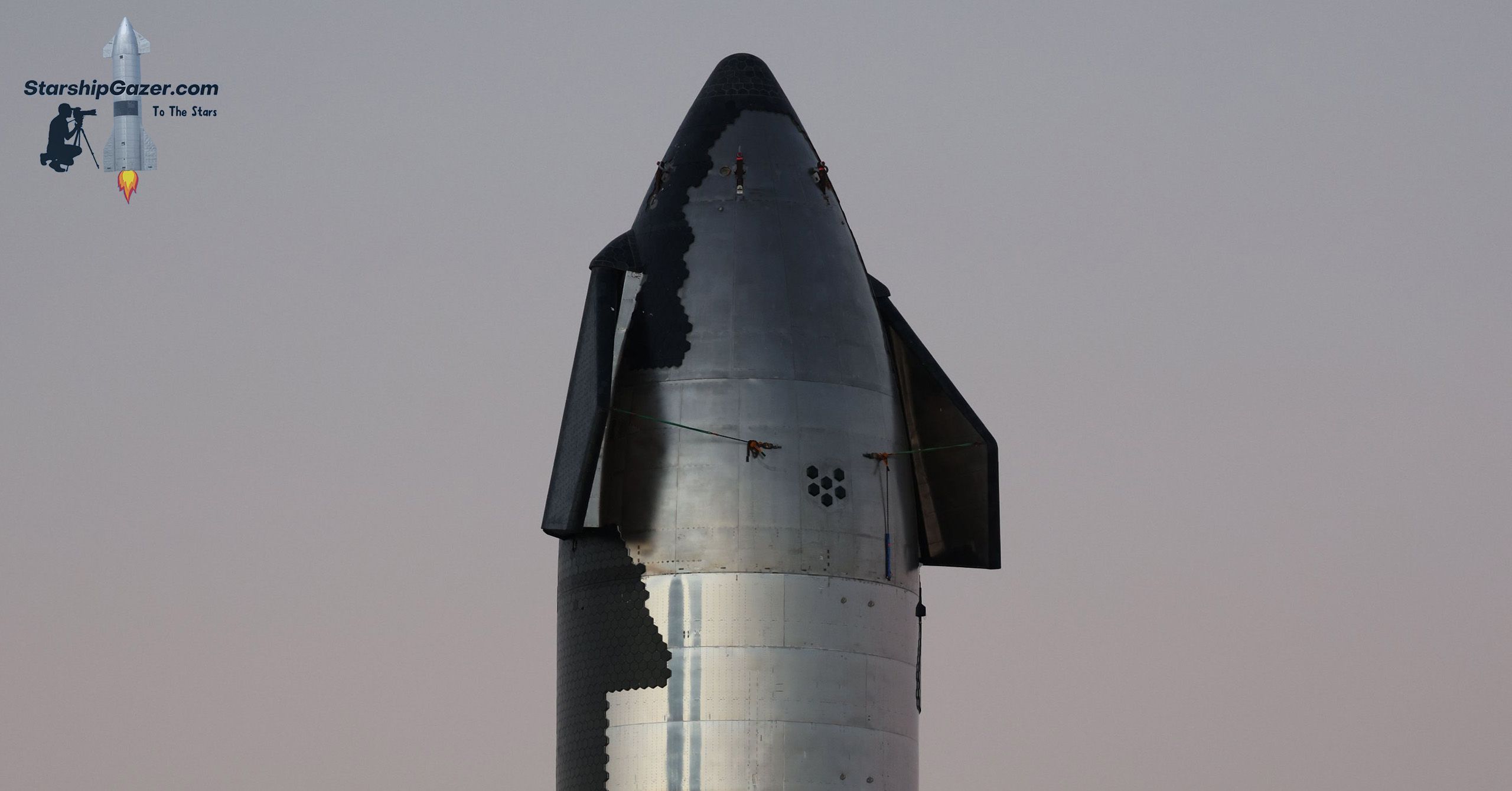
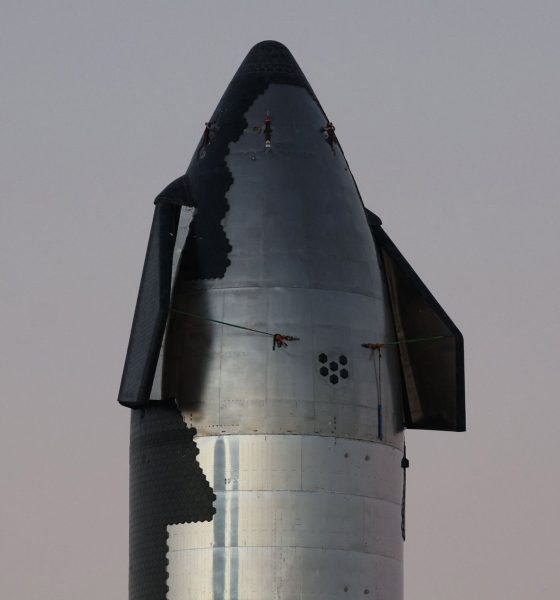
News
SpaceX installs new Starship on static fire test stand
SpaceX may be focused on preparing Starship S24 and Super Heavy Booster 7 for their potentially imminent orbital launch debut, but the rest of the company’s Starship factory isn’t just sitting around.
The laser focus on carefully testing Ship 24 and Booster 7 may have limited the effectiveness of Starbase rocket production, but the factory has continued to produce new ships and boosters. SpaceX has even conducted some limiting testing of a pair of prototypes meant to follow in the footsteps of S24 and B7. In mid-January, that process entered a new and more active phase as SpaceX transported Starship S25 from the factory to the launch pad.
The trip is not Ship 25’s first. Starship S25 first headed to SpaceX’s South Texas launch and test facilities on October 19th, 2022, shortly after the vehicle was fully assembled. Around three weeks of testing followed, and now Ship 25 is back for more.
The update that's rolling out to the fleet makes full use of the front and rear steering travel to minimize turning circle. In this case a reduction of 1.6 feet just over the air— Wes (@wmorrill3) April 16, 2024
Ship 25
The first round of tests was thorough and put Ship 25 through a pneumatic proof test, multiple cryogenic proof tests, and likely a few simulated thrust tests using six hydraulic rams.
“Ship 25 was removed from SpaceX’s other Starship test stand on November 8th, it was rolled back to Starbase’s Starship factory. Ship 25 first rolled to the launch site on October 19th and has since completed four visible tests. On October 28th, Ship 25 survived a pneumatic proof test that showed that its tanks were leak-free and capable of surviving flight pressures (roughly 6-8.5 bar or 90-125 psi). Three cryogenic proof tests followed on November 1st, 2nd, and 7th. The first cryoproof was likely just that – a test that pressurized Ship 25’s tanks and filled them with cryogenic liquid nitrogen (LN2) or a combination of liquid oxygen and LN2.
The next two tests likely took advantage of the customized test stand, which has been semi-permanently outfitted with a set of hydraulic rams that allow SpaceX to simulate the thrust of six Raptor engines while Starship’s structures are chilled to cryogenic temperatures and loaded with roughly 1000 tons (~2.2M lb) of cryogenic fluids. If a Starship can survive those stresses on the ground, the assumption is that it will likely survive similar stresses in flight.”
Teslarati.com – October 20th, 2022
As usual, SpaceX didn’t comment on the development or indicate how that initial proof testing had gone, but Ship 25’s January 14th, 2023 return to the launch site all but guaranteed that that testing had gone more or less according to plan. On January 17th, SpaceX lifted Ship 25 onto Starbase’s only Starship static fire test stand, further confirming that Ship 25 proof testing went to plan.
Soon after its November 2022 return to Starbase’s build site, six Raptor engines were moved into the High Bay and installed on Ship 25. The Starship’s aft was then likely buttoned up with a heat shield before it headed to the test site to begin its static fire test campaign. That campaign could tell us a lot about the status of Starship prototypes. To date, only two Ships have completed full six-Raptor static fire tests, and both took days, weeks, or months to build up to those six-engine milestones with multiple smaller tests. If Ship 25 were to skip those preliminary tests and immediately conduct a six-engine static fire, it would be a sign that SpaceX is significantly more confident in the current Starship design.
Booster 9
Ship 25 is believed to be paired with Super Heavy Booster 9, which recently finished its own round of proof tests. About two months behind Ship 25, Booster 9 rolled out of its Starbase assembly bay and headed to the launch site on December 15th, 2022. The Super Heavy prototype ultimately completed two partial cryogenic proof tests on December 21st and 29th, during which it was likely loaded with around a thousand tons of liquid nitrogen to simulate explosive liquid oxygen and methane propellant. Booster 9 then returned to Starbase’s factory on January 10th, 2023.
Assuming those tests went well, Raptor engine installation could begin at any moment. However, thanks to significant design changes and upgrades present on Booster 9, outfitting and testing this Super Heavy could take longer than usual. Many smaller changes are present, but the most significant by far is the addition of an upgraded version of Raptor. The engine’s combustion-related hardware is likely the same as the Raptor V2 engines present on Booster 7, Ship 24, and Ship 25. But the hardware used to steer each engine – called thrust vector control (TVC) – has been completely changed.
Instead of using a complex web of plumbing and hydraulic power units bolted to the side of Super Heavy, Booster 9’s 13 central Raptors will be electrically steered. That has allowed SpaceX to remove those power units (streamlining Booster 9’s exterior) and reduce the already rats nest of plumbing required to fuel, control, power, and steer dozens of high-performance rocket engines on one booster. SpaceX has been testing electric Raptor TVC for months at its McGregor, Texas development facilities, but it’s unclear if the new technology has progressed to the point that 13 upgraded engines are ready to be installed on Booster 9. In the meantime, SpaceX may install Booster 9’s fixed outer ring of 20 Raptor V2 engines – none of which gimbal or need new electric TVC hardware.
Once all 33 engines are installed, it’s likely that Booster 9 will be thoroughly tested to ensure that all 13 electrically-steered engines work well together before, during, and after numerous static fire tests. SpaceX will also need to verify that the batteries likely powering those new systems function as expected. During the peak stresses they will likely experience, the electric TVC could need to rapidly redirect more than 3000 tons (~6.6 million lbf) of thrust multiple times per second. The peak power required from Super Heavy’s batteries will likely be immense as a result.
For now, the start of Super Heavy B9’s own static fire test campaign could be months away and will have to wait until Starbase’s only orbital launch mount – currently occupied by Booster 7, Ship 24, and Starship’s first orbital launch campaign – is vacated. With that orbital launch debut unlikely to happen before March 2023, Booster 9 has plenty of time to relax inside Starbase’s Wide Bay while Ship 25 begins static fire testing at a separate stand.

News
Tesla (TSLA) receives “Buy” rating and $551 PT from Canaccord Genuity
He also maintained a “Buy” rating for TSLA stock over the company’s improving long-term outlook, which is driven by autonomy and robotics.
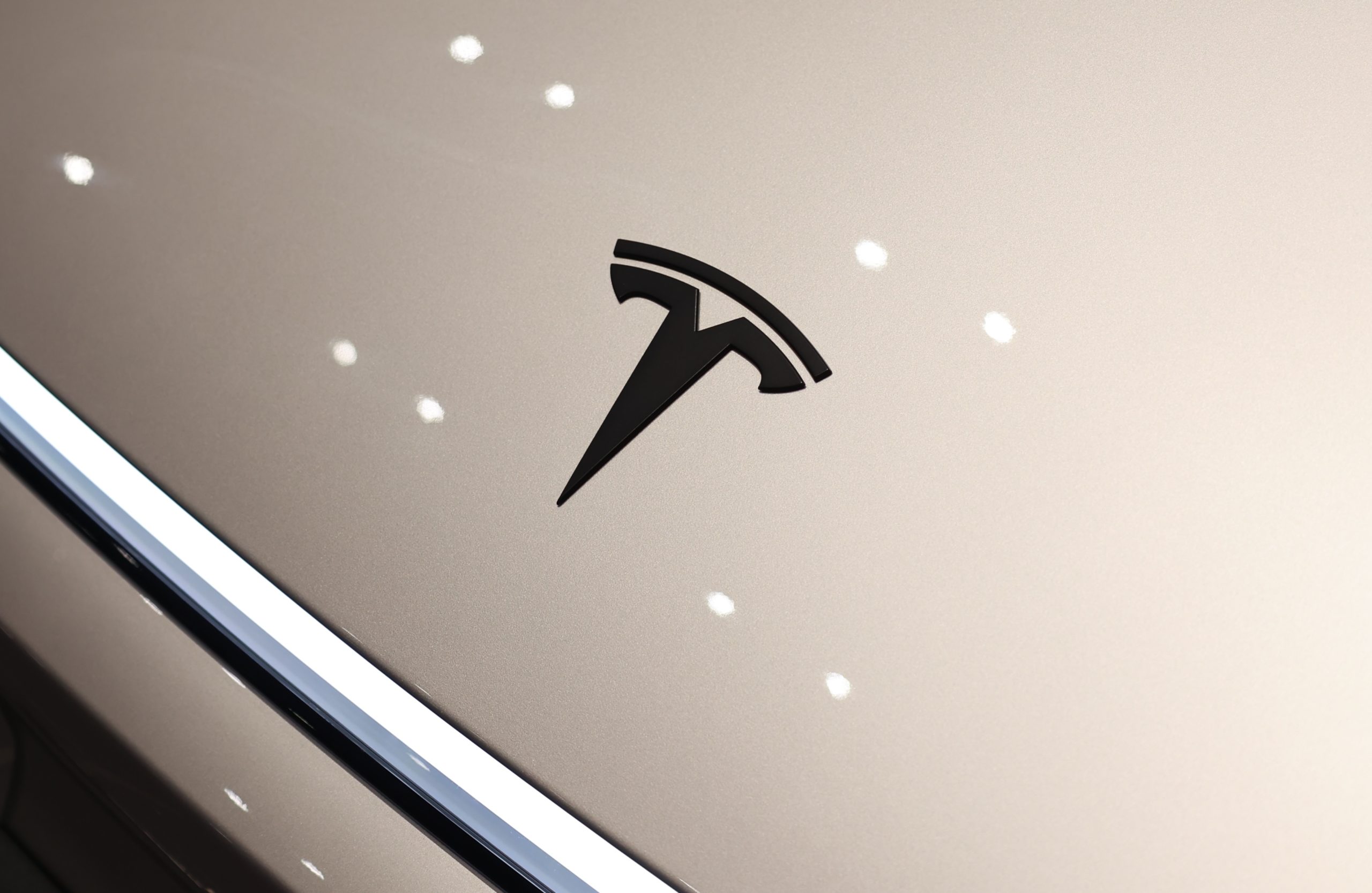
Canaccord Genuity analyst George Gianarikas raised his Tesla (NASDAQ:TSLA) price target from $482 to $551. He also maintained a “Buy” rating for TSLA stock over the company’s improving long-term outlook, which is driven by autonomy and robotics.
The analyst’s updated note
Gianarikas lowered his 4Q25 delivery estimates but pointed to several positive factors in the Tesla story. He noted that EV adoption in emerging markets is gaining pace, and progress in FSD and the Robotaxi rollout in 2026 represent major upside drivers. Further progress in the Optimus program next year could also add more momentum for the electric vehicle maker.
“Overall, yes, 4Q25 delivery expectations are being revised lower. However, the reset in the US EV market is laying the groundwork for a more durable and attractive long-term demand environment.
“At the same time, EV penetration in emerging markets is accelerating, reinforcing Tesla’s potential multi‑year growth runway beyond the US. Global progress in FSD and the anticipated rollout of a larger robotaxi fleet in 2026 are increasingly important components of the Tesla equity story and could provide sentiment tailwinds,” the analyst wrote.
Tesla’s busy 2026
The upcoming year would be a busy one for Tesla, considering the company’s plans and targets. The autonomous two-seat Cybercab has been confirmed to start production sometime in Q2 2026, as per Elon Musk during the 2025 Annual Shareholder Meeting.
Apart from this, Tesla is also expected to unveil the next-generation Roadster on April 1, 2026. Tesla is also expected to start high-volume production of the Tesla Semi in Nevada next year.
Apart from vehicle launches, Tesla has expressed its intentions to significantly ramp the rollout of FSD to several regions worldwide, such as Europe. Plans are also underway to launch more Robotaxi networks in several more key areas across the United States.
News
Waymo sues Santa Monica over order to halt overnight charging sessions
In its complaint, Waymo argued that its self-driving cars’ operations do not constitute a public nuisance, and compliance with the city’s order would cause the company irreparable harm.
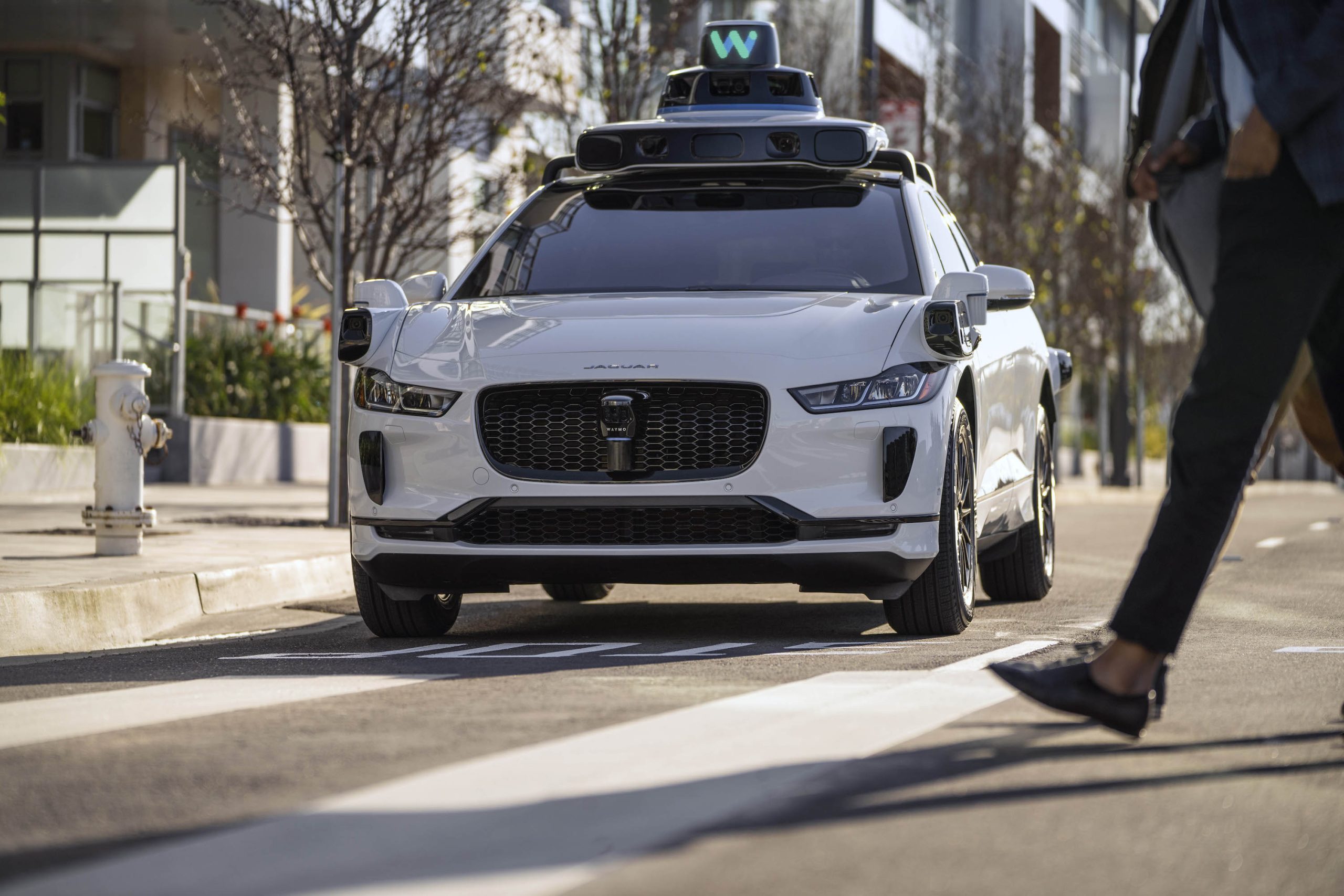
Waymo has filed a lawsuit against the City of Santa Monica in Los Angeles County Superior Court, seeking to block an order that requires the company to cease overnight charging at two facilities.
In its complaint, Waymo argued that its self-driving cars’ operations do not constitute a public nuisance, and compliance with the city’s order would cause the company irreparable harm.
Nuisance claims
As noted in a report from the Los Angeles Times, Waymo’s two charging sites at Euclid Street and Broadway have operated for about a year, supporting the company’s growing fleet with round-the-clock activity. Unfortunately, this has also resulted in residents in the area reportedly being unable to sleep due to incessant beeping from self-driving taxis that are moving in and out of the charging stations around the clock.
Frustrated residents have protested against the Waymos by blocking the vehicles’ paths, placing cones, and “stacking” cars to create backups. This has also resulted in multiple calls to the police.
Last month, the city issued an order to Waymo and its charging partner, Voltera, to cease overnight operations at the charging locations, stating that the self-driving vehicles’ activities at night were a public nuisance. A December 15 meeting yielded no agreement on mitigations like software rerouting. Waymo proposed changes, but the city reportedly insisted that nothing would satisfy the irate residents.
“We are disappointed that the City has chosen an adversarial path over a collaborative one. The City’s position has been to insist that no actions taken or proposed by Waymo would satisfy the complaining neighbors and therefore must be deemed insufficient,” a Waymo spokesperson stated.
Waymo pushes back
In its legal complaint, Waymo stated that its “activities at the Broadway Facilities do not constitute a public nuisance.” The company also noted that it “faces imminent and irreparable harm to its operations, employees, and customers” from the city’s order. The suit also stated that the city was fully aware that the Voltera charging sites would be operating around the clock to support Waymo’s self-driving taxis.
The company highlighted over one million trips in Santa Monica since launch, with more than 50,000 rides starting or ending there in November alone. Waymo also criticized the city for adopting a contentious strategy against businesses.
“The City of Santa Monica’s recent actions are inconsistent with its stated goal of attracting investment. At a time when the City faces a serious fiscal crisis, officials are choosing to obstruct properly permitted investment rather than fostering a ‘ready for business’ environment,” Waymo stated.
News
Tesla FSD v14.2.2 is getting rave reviews from drivers
So far, early testers have reported buttery-smooth drives with confident performance, even at night or on twisty roads.
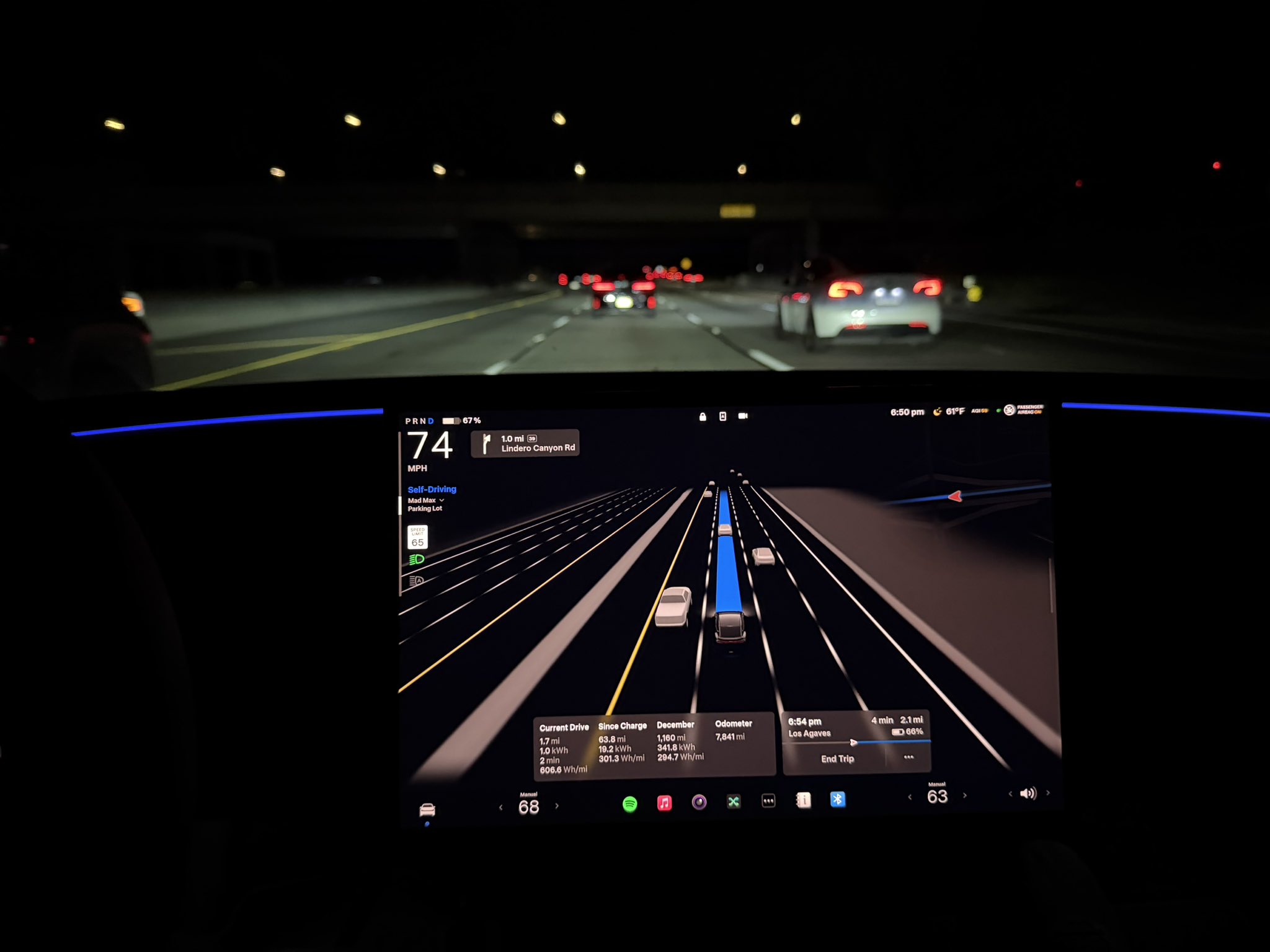
Tesla Full Self-Driving (Supervised) v14.2.2 is receiving positive reviews from owners, with several drivers praising the build’s lack of hesitation during lane changes and its smoother decision-making, among others.
The update, which started rolling out on Monday, also adds features like dynamic arrival pin adjustment. So far, early testers have reported buttery-smooth drives with confident performance, even at night or on twisty roads.
Owners highlight major improvements
Longtime Tesla owner and FSD user @BLKMDL3 shared a detailed 10-hour impression of FSD v14.2.2, noting that the system exhibited “zero lane change hesitation” and “extremely refined” lane choices. He praised Mad Max mode’s performance, stellar parking in locations including ticket dispensers, and impressive canyon runs even in dark conditions.
Fellow FSD user Dan Burkland reported an hour of FSD v14.2.2’s nighttime driving with “zero hesitations” and “buttery smooth” confidence reminiscent of Robotaxi rides in areas such as Austin, Texas. Veteran FSD user Whole Mars Catalog also demonstrated voice navigation via Grok, while Tesla owner Devin Olsen completed a nearly two-hour drive with FSD v14.2.2 in heavy traffic and rain with strong performance.
Closer to unsupervised
FSD has been receiving rave reviews, even from Tesla’s competitors. Xpeng CEO He Xiaopeng, for one, offered fresh praise for FSD v14.2 after visiting Silicon Valley. Following extended test drives of Tesla vehicles running the latest FSD software, He stated that the system has made major strides, reinforcing his view that Tesla’s approach to autonomy is indeed the proper path towards autonomy.
According to He, Tesla’s FSD has evolved from a smooth Level 2 advanced driver assistance system into what he described as a “near-Level 4” experience in terms of capabilities. While acknowledging that areas of improvement are still present, the Xpeng CEO stated that FSD’s current iteration significantly surpasses last year’s capabilities. He also reiterated his belief that Tesla’s strategy of using the same autonomous software and hardware architecture across private vehicles and robotaxis is the right long-term approach, as it would allow users to bypass intermediate autonomy stages and move closer to Level 4 functionality.








